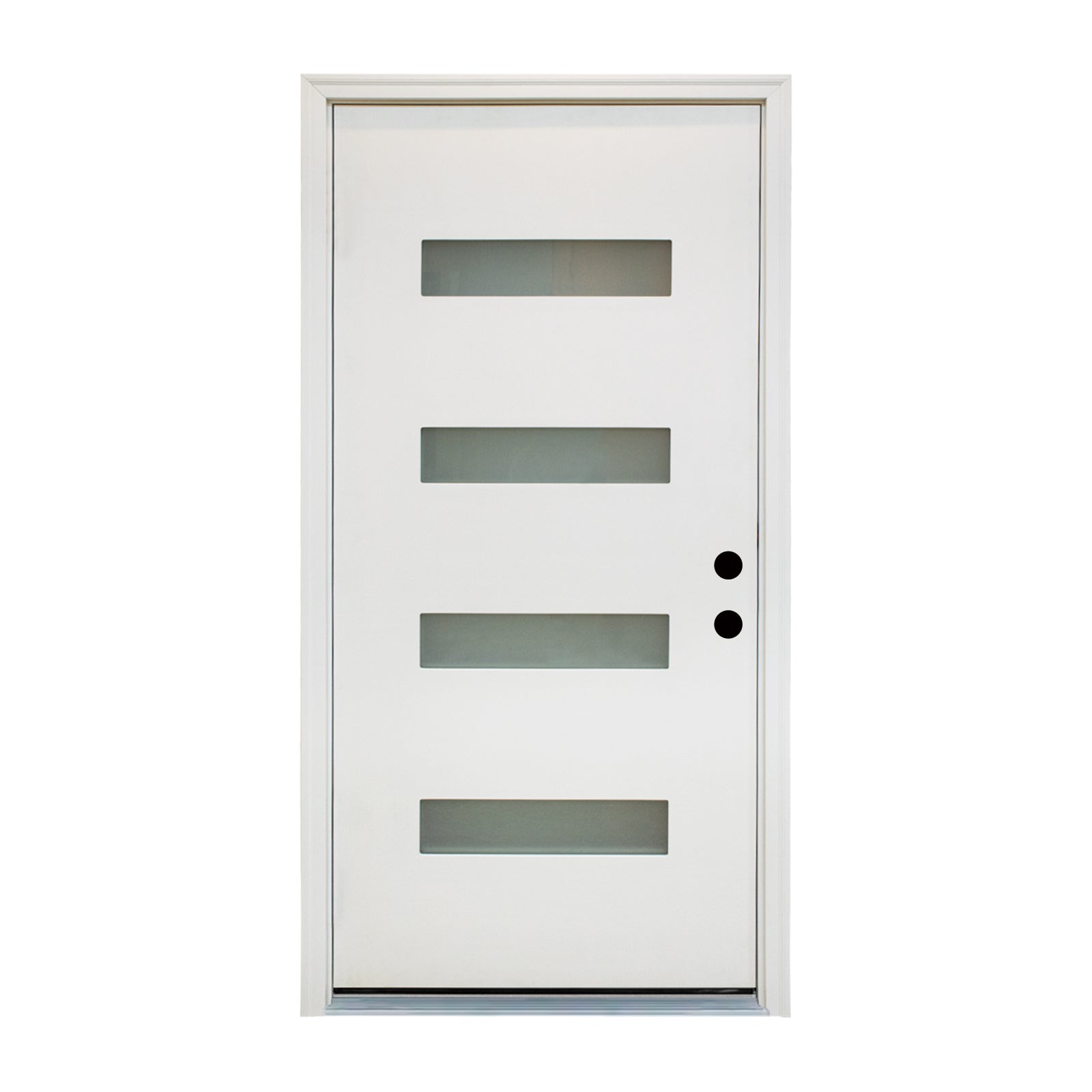Unlock the Secret: The Ultimate Guide to Choosing Your Perfect Fiberglass Front Door!
Choosing the right front door is more than just a matter of aesthetics; it sets the tone for your entire home. A fiberglass exterior front door combines durability, beauty, and energy efficiency, making it an ideal choice for homeowners seeking a balanced entryway solution. In this guide, we will delve into the fundamental aspects of fiberglass doors, from their unique characteristics and features to installation considerations and design options. By the end of this article, you'll be well-equipped to evaluate and compare different fiberglass exterior front doors, ensuring that you make an informed decision for your home.

Understanding Fiberglass Exterior Front Doors
Fiberglass doors are crafted from a composite material that consists of woven glass fibers and resin. Unlike traditional wooden doors, which can warp, swell, or rot over time, fiberglass doors are engineered to withstand harsh weather conditions without compromising structural integrity. They are also lighter than steel doors, making them easier to handle and install. One of the standout advantages of fiberglass doors is their low maintenance requirements; they do not need regular painting or staining like wood and can be cleaned easily with mild soap and water. Additionally, fiberglass doors often come with energy-efficient features such as insulated cores, which help to minimize heating and cooling costs, making them a smart investment in the long run.
Key Features to Consider
When evaluating fiberglass exterior front doors, several key features should be at the forefront of your decision-making process. Insulation value is critical, as it directly affects your home's energy efficiency. Look for doors with a high R-value, which indicates better insulation properties. Security features such as multi-point locking systems and reinforced frames are also essential for enhancing the safety of your home. Design options are plentiful, ranging from traditional panel designs to modern flush styles, allowing homeowners to find a door that complements their architectural aesthetic. Furthermore, color choices can significantly impact curb appeal; many fiberglass doors are available in a variety of finishes, including wood-grain textures, which can blend seamlessly with your home's exterior.
Evaluating Different Styles and Designs
Fiberglass exterior front doors are available in a wide array of styles and designs, making it easy to find one that suits your taste and home architecture. Modern designs often feature sleek lines and minimalistic hardware, perfect for contemporary homes, while traditional styles may incorporate ornate detailing and classic panel structures, ideal for more classic or colonial homes. Custom designs are also an option for those seeking a unique look that sets their home apart. When selecting a style, consider how the door's design will harmonize with existing architectural elements, such as windows and siding. A friend of mine recently renovated their front entryway, opting for a beautiful arched fiberglass door that immediately enhanced the overall look of their home, drawing compliments from neighbors and visitors alike.
Comparing Price vs. Value
The price range for fiberglass exterior front doors can vary significantly based on features, design, and insulation properties. While you may find more affordable options, it's essential to assess value rather than simply price. Consider the long-term benefits of investing in a higher-quality door that offers better insulation, enhanced security features, and a longer lifespan. Warranties also play a crucial role in determining value; look for doors with comprehensive warranties that cover defects and weather-related damages. Understanding these factors can help you make a more informed decision and ensure you choose a door that meets your needs without compromising on quality.
Installation Considerations
Installing a fiberglass door can be a straightforward process, but there are several considerations to keep in mind. Homeowners typically have two options: hiring a professional installer or opting for a DIY project. While professional installation can save time and ensure proper fitting, skilled DIYers may choose to install their doors themselves, provided they follow the manufacturer's guidelines closely. The installation process generally involves removing the old door, preparing the door frame, and securing the new door in place. Regardless of the option you choose, it’s essential to ensure that the door is properly fitted and sealed to avoid drafts and water damage.
Final Thoughts on Choosing Your Fiberglass Door
In summary, selecting the right fiberglass exterior front door is a crucial decision that can significantly impact your home's aesthetics, security, and energy efficiency. By understanding the unique characteristics of fiberglass doors, considering essential features, and evaluating different styles and price points, you can make an informed choice that suits your needs and enhances your home's appeal. As you embark on this journey, take the time to explore your options carefully and choose a door that truly reflects your personal style while providing lasting value for your home.








